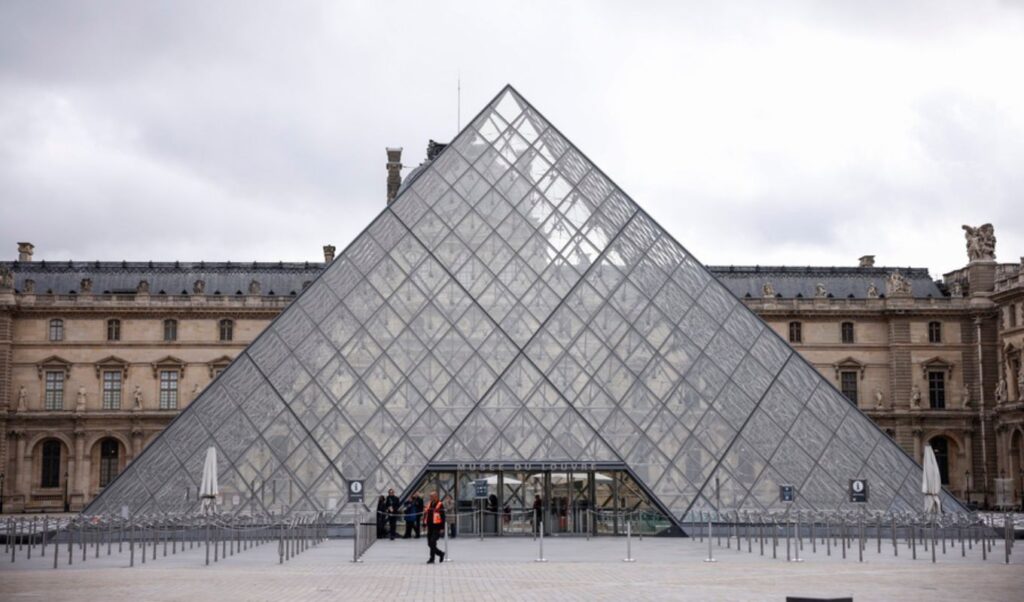A spectacular heist shocked the Louvre Museum on Sunday, October 19, 2025, when four perpetrators stole legendary jewelry from the Napoleonic era. The incident revives memories of the historic theft of the Mona Lisa in 1911, making it the second largest heist in the famous museum’s history.
The spectacular jewelry heist at the Louvre Museum
French authorities are searching for four thieves who executed the heist of the century at the Louvre Museum. Paris prosecutor Laure Beccuau does not rule out foreign involvement in the robbery. President Emmanuel Macron pledged to recover the artifacts and bring those responsible to justice. The perpetrators focused on the Apollo Gallery, where the French Crown Jewels are housed. They removed eight priceless objects from Napoleon’s collection, while attempting to steal Empress Eugénie’s crown containing 1,354 diamonds and 56 emeralds. The precious jewel was found broken at the museum’s exit.
The professional execution, security gaps, scenarios and recovery prospects
The heist was executed with cinematic precision. Four perpetrators disguised as workers climbed with a ladder into the iconic Louvre Museum, remained inside the building for less than 4 minutes, and completed the robbery in a total of 7 minutes. The Ministry of Culture maintained that the alarm system functioned normally and the five Apollo Gallery employees followed security protocol. Nevertheless, the investigation will examine the chain of responsibility for security gaps that allowed this spectacular theft.
Experts are examining two main scenarios for the Louvre Museum heist:
- Professional thieves who acted on commission for a wealthy collector
- Money laundering operation involving organized crime
There is serious risk that the jewelry will be dismantled and sent abroad through specialized networks. Police have a one-week window to find the treasures, as they will be lost forever after that, analysts estimate.
The historic theft of the Mona Lisa from the Louvre Museum in 1911
The Louvre Museum has a long history of thefts, with the most famous being the theft of the Mona Lisa in 1911. Vincenzo Peruggia, a former museum employee, hid inside the building and exited carrying the painting under his coat. The Mona Lisa theft was only discovered after 24 hours, when a wealthy visitor noticed the artwork’s absence from the Salon Carré. Peruggia kept the Mona Lisa hidden in his apartment for two years, despite police investigations. During the search, even young Pablo Picasso was questioned, who was revealed to have purchased stolen ancient heads from a previous Louvre Museum theft. The Mona Lisa was recovered in 1913, when Peruggia attempted to sell it to another museum.
Other significant Louvre heists
In 1976, three thieves broke into the Louvre Museum at dawn and stole a 19th-century sword decorated with King Charles I’s diamonds. The perpetrators used metal scaffolding, broke windows and entered the museum, tactics similar to today’s heist. In 1990, Pierre-Auguste Renoir’s painting “Portrait of a Seated Woman” was cut from its frame and disappeared from a third-floor gallery. In 1998, Camille Corot’s painting “Le Chemin de Sevres” was stolen and never found, leading to a redesign of security measures. The recent heist recalls the adventures of the fictional burglar Arsène Lupin, while many compared it to Money Heist. Interior Minister Laurent Nuñez will send guidelines for strengthening security around France’s cultural institutions following this spectacular theft.




